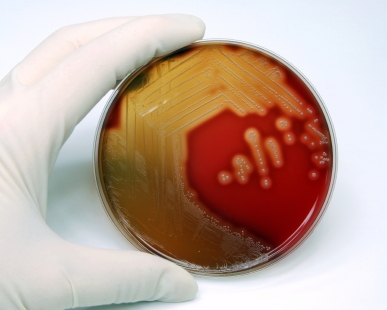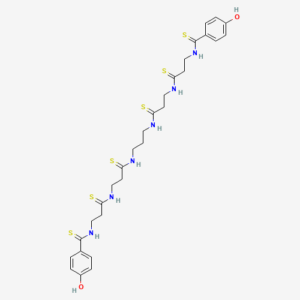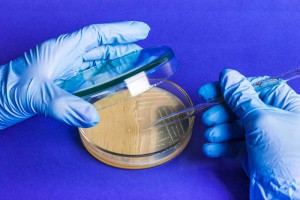It is estimated that all the bacterial species so far described represent only a tiny fraction of the total. The rest remain unknown to science because they are “unculturable” in standard (or known) laboratory media. Given that many antibiotics were first isolated from environmental bacteria, it seems likely that these as yet unknown organisms could also be a rich source of potential new drug candidates. The desperate need for new strategies to combat multi-drug resistant infections gives impetus to studies investigating how we can culture some of these “unculturable” bacteria and uncover their potential as a source of much-needed new treatments.
Continue reading “Culturing the Unculturable Bacteria”antibiotic
The Search for New Antibiotics: Looking for Achilles’ Heel (Again)
 Some of the first available doses of penicillin were used to treat allied soldiers wounded on D-Day. It was the end of one war, but just the beginning of another–one that has gone on for a long time. The story of the development of antibiotics, and the emergence of resistant bacteria, followed by the renewed search for new antibiotics, seems neverending. As soon as a new antibiotic is discovered, it seems only a matter of time before a resistance mechanism emerges, and remaining one step ahead of the bugs can seem like a relentless challenge. Continue reading “The Search for New Antibiotics: Looking for Achilles’ Heel (Again)”
Some of the first available doses of penicillin were used to treat allied soldiers wounded on D-Day. It was the end of one war, but just the beginning of another–one that has gone on for a long time. The story of the development of antibiotics, and the emergence of resistant bacteria, followed by the renewed search for new antibiotics, seems neverending. As soon as a new antibiotic is discovered, it seems only a matter of time before a resistance mechanism emerges, and remaining one step ahead of the bugs can seem like a relentless challenge. Continue reading “The Search for New Antibiotics: Looking for Achilles’ Heel (Again)”
Finding the Next Generation of Antibiotics: Closthioamide

Mention the word penicillin and it conjures up images of mold growing on bacterial culture plates and Dr. Alexander Fleming observing that the mold had killed the surrounding bacteria, ushering in the age of antibiotics. Bacterial infections could easily be treated with penicillin or any one of the bewildering array of new antibiotics continually being discovered. The result of using these antimicrobial drugs: numerous lives were saved and human health improved. However, bacteria are clever organisms and as quickly as humans developed an antibiotic to treat infection, the microbes would find a way around the bacteriostatic or bacteriocidal compound. It is a scary world where antibiotics are rendered impotent and fewer and fewer weapons are left in the arsenal to treat multidrug-resistant Staphylococcus aureus (MRSA) and hospital-acquired drug-resistant Gram-negative bacteria (e.g., Acinetobacter baumannii).
Continue reading “Finding the Next Generation of Antibiotics: Closthioamide”
